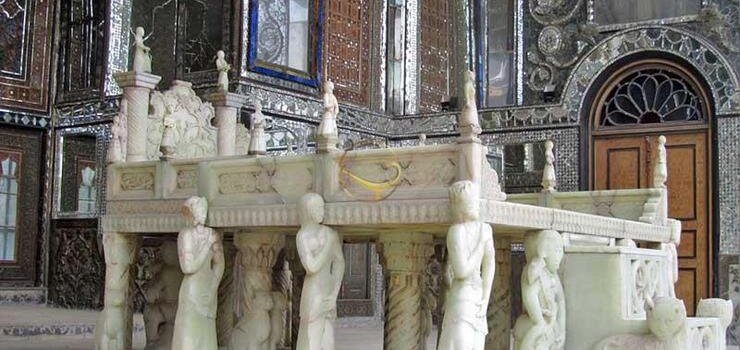In 1792, when Aghā Mohammad Khan conquered Shiraz, he had the paintings, curtains, mirrors, and marble slabs from Karim Khan’s citadel in Shiraz transferred to Tehran, which at that time already had a Zand divan-khāneh, and installed in the Marble Throne Veranda, built in 1807. The veranda contains elements from both Zand and Qajar periods.
In 1807, Fat’h Ali Shah ordered construction of a marble throne, which came to be known as Takht.e Tavous (the Peacock Throne), consisting in total of 65 pieces of marble brought from mines in Yazd, to be placed permanently in the veranda. Designed by Mirza Baba Shirazi (Naqqāsh Bāshi) and the stonecutter, Mohammad Ebrahim Esfahani, this 250-year-old throne was completed in four years, from 1747 to 1751. The jewel-studded throne is carried on the shoulders of angels and demons, referring to the story of Solomon’s flying throne. This is why the Peacock Throne is also called the Throne of Solomon. Seventeen verses on its upper side praise Fat’h Ali Shah and the throne itself.
The Marble Throne Veranda was used on ceremonial occasions and for royal receptions. During religious celebrations and other festivals, the king would sit on the throne while statesmen, royal courtiers, ambassadors and foreign envoys would pay him homage. In 1925, Reza Shah Pahlavi held a symbolic coronation in the Marble Throne Veranda before his official crowning.

